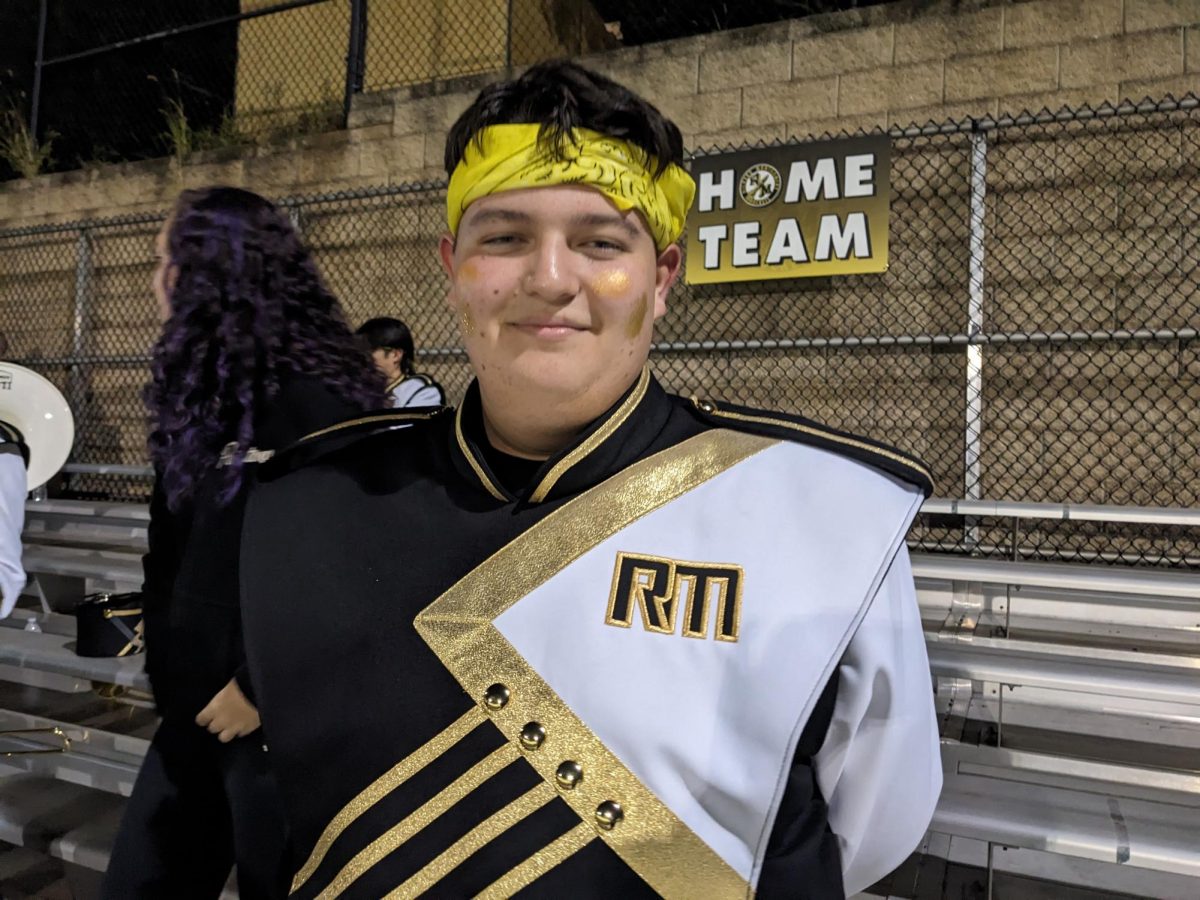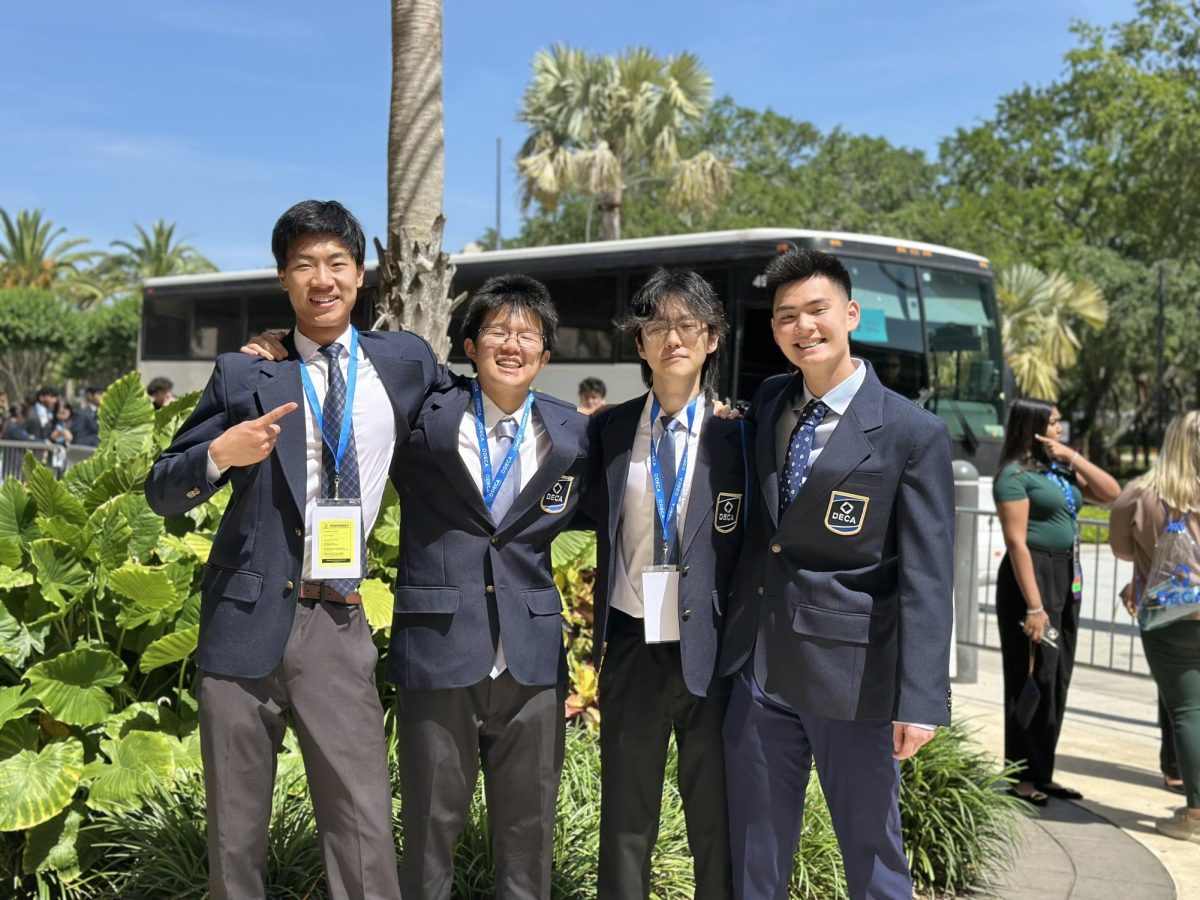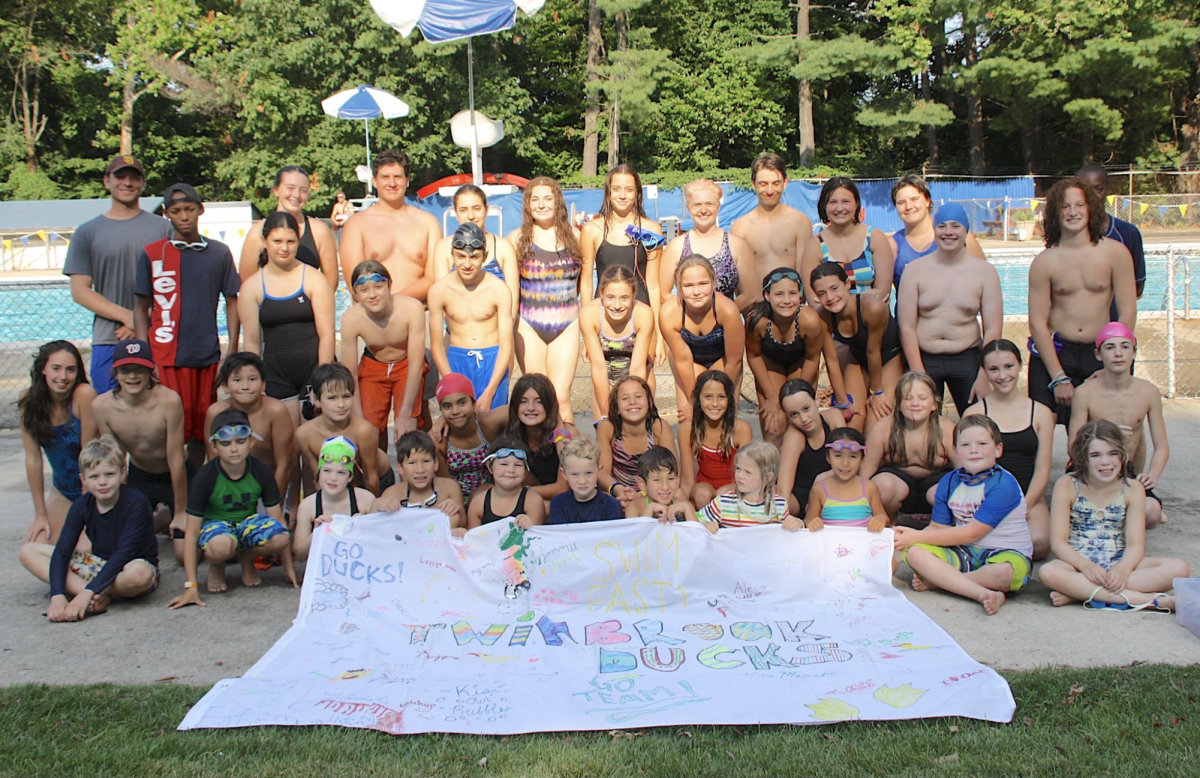RM’s Rocket Robotics team is a staple of the school’s science and technology clubs and has been to several regional competitions since its founding. The team has changed and adapted over the years, growing in both number and experience as their achievements reach new heights. The current team is a lively, close-knit bunch with many memories between them and many more to come.
Room 336 is home to the robotics team and every Tuesday and Thursday, the members come together to work and plan for competitions—in the months leading up to competitions, members make their way up to the robotics lab every single day after school. The team consists of three divisions that have their own unique responsibilities: programming, building, and outreach. Each division has a coordinator, and after the whole team goes over their daily agenda, coordinators dole out assignments.
The team’s main coder, sophomore Drew Wong, plays a part in the programming division. “When you’re trying to move the robot around, there’s different math equations that you need to map into the controller. So a lot of it is actually just researching and applying that to our own robots,” Wong said. The competition’s game is split into two parts—the teleoperated part controlled remotely, and the autonomous part where the robot moves on its own. “All of it is code, and so that can take a long time and a lot of systems, months even, to get a really good autonomous,” Wong said.
Junior Adi Purohit has always held a passion for building things, which led him to building for the team. ”I started with 3D printing and I was like, ‘Whoa, I can apply this to different aspects of my life,” Purohit said. “The building process starts with, we all come up with a design. We try to include as many people as we can to figure out a plan of ‘How do we want to go about achieving this,’ then we go into CAD softwares and we find out ‘How can we design this to fit our needs?’ We 3D print them, then we test them out.”
Sophomore Ganesh Ramamurthi oversees the team’s finances and outreach division, managing who the team contacts for sponsorships, keeping track of purchases and income to report back to sponsors and coordinating community outreach. “The biggest misconception that people have about a robotics team is that it’s only worthwhile for joining if you want to be an engineer. This team offers a great opportunity to do stuff that, if you want to go into STEM, if you want to learn how to program, if you just want to learn programming principles, it’s a great opportunity, but there’s a whole other host to it. For example, the entire business aspect of it.”
This school year, the robotics team had one of their most exceptional competitive seasons, competing in three competitions and ending the season off with the FIRST Tech Challenge (FTC) Chesapeake Regional Championships. Juniors and co-captains Kristiyan Donchev and Brynn Johnson contributed to the team’s current success, helping to build the team from the ground up in their freshman years and sticking with it through thick and thin. “I was really excited when I met a girl who wanted to start a new team…me and Kris, the other co-captain, we took it over when she graduated and built it into what it currently is,” Johnson said. “We were super new to it and then we had people like Ganesh and Drew join and this year we’ve just taken things to a whole new level for us with less basic robots, more advanced code.”
Every season, the objective of a robotics competition changes and teams have to design and program a robot that can fulfill a fixed task in a game format. The team’s attendance at the FTC Chesapeake Regional Championships was an experience that came with both ups and downs. “It was a lot more difficult than the other two competitions we went to because the other two were local competitions, but once you get to the state level or the regional level, it’s a lot harder,” Wong said.
One of their biggest struggles came from a portion at the end of a match where teams could have their robots reach up and hang on a bar for 30 points. “We have this hang on the back of the robot, which is a linear slide that goes up and hooks the robot around. That belt had a concerning tendency of snapping constantly and so we were running out of belts, the hang in our qualifiers did not perform the way we wanted it to, and it didn’t work a lot,” Ramamurthi said.
Despite this, some of the team’s other matches went without a hitch. “Drew’s code for the autonomous period worked really well. We scored three samples in the high basket, which is a lot. It was crazy, he put in a lot of work this season so just to see it has paid off in regionals was definitely a big up that the whole team could be proud of,” Johnson said.
Beyond competitions, the team also participates in many different community outreach events like going to STEM nights and hosting free Java classes at different local libraries. “We talk to kids and parents at STEM nights about how they can get their kids involved in robotics and how their kids can join our team when they come to high school. And then we also bring our robot from last year and we show them different pieces of it and its mechanics,” Johnson said. The team also strives for accessibility, breaking free of the traditional cost barriers that typically come hand-in-hand with just joining a robotics team or entering competitions. “Our biggest thing as a team is making sure that there is no barrier to entry. One of the issues that I personally see with FIRST as a whole, is that the league we compete in, not a lot of local teams here have anywhere from $500 to $1500 in yearly fees to get on the team and nobody on our team right now can pay that,” Ramamurthi said.
With the end of the current competitive season, the team is setting their sights on improvements for the next year. “One thing we do need to focus on as a team is planning and designing and how we basically get ourselves ready to even start designing for our next competition,” Purohit said. Wong appreciates the experiences that the team has given him and looks forward to the new season. “I’ve been able to meet a lot of new people, make a lot of new friends. Just working with them overall has been good,” Wong said. “We’re going to try to hand things out better, have more team communication and collaboration, and then coding-wise, we’re going to make a lot of improvements to our systems.”
The robotics team also holds great appreciation for the support of their sponsors. “Doing FTC takes a lot of time, and none of what we’ve accomplished this season would be possible without our teacher sponsors. On top of meeting twice a week for two hours each regularly, over the past few months they’ve allowed us to meet every single day for weeks at a time. It is impossible to stress how much support our coaches have given us through highs and lows, putting in purchase orders quickly when we’re up against the clock and taking so much time out of their weeks to ensure that our team can perform to the best of our abilities,” Ramamurthi said. “They have been absolutely instrumental in everything we’ve done this season, and their ceaseless encouragement is one of the biggest factors in our success this season.”








